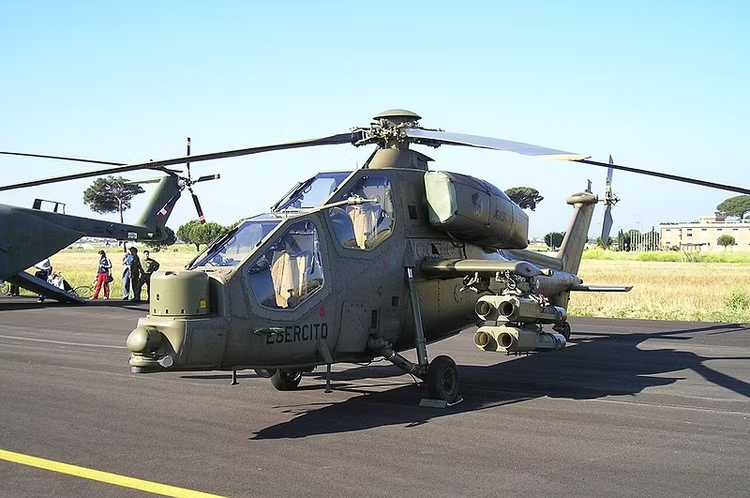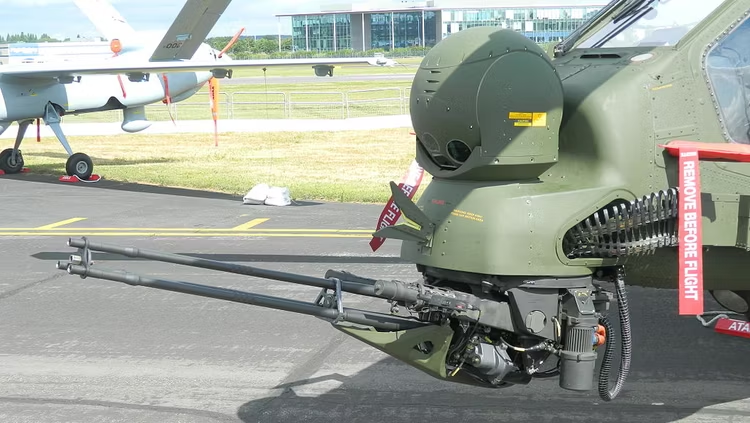𝙃𝙚𝙧𝙚’𝙨 𝙒𝙝𝙖𝙩 𝙈𝙖𝙠𝙚𝙨 𝙏𝙝𝙚 𝙄𝙩𝙖𝙡𝙞𝙖𝙣 𝘼𝙜𝙪𝙨𝙩𝙖 𝘼129 𝙈𝙖𝙣𝙜𝙪𝙨𝙩𝙖 𝘼 𝘾𝙡𝙞𝙣𝙞𝙘𝙖𝙡 𝘼𝙩𝙩𝙖𝙘𝙠 𝙃𝙚𝙡𝙞𝙘𝙤𝙥𝙩𝙚𝙧
The Mangusta (Mongoose) was Agusta’s answer to the Italian Army’s requirement for a tank-busting attack helicopter.
In service with the Italian Army since 1990, The Agusta A129 Mangusta is the first attack helicopter designed and built entirely in Western Europe.
Conceived in the late 1970s, the Mangusta (Mongoose) was Agusta’s answer to the Italian Army’s requirement for a tank-busting attack helicopter.
Germany’s MBB was initially a joint partner in the project but soon dropped out, leaving the Italian firm looking for new partnerships throughout much of the 1980s.
This didn’t stop Agusta from testing the first prototype in 1983, and despite a further setback in 1990 when Britain and the Netherlands pulled out of the project and decided instead to purchase the AH-64 Apache helicopter, Agusta forged ahead regardless.

In The Apache’s Shadow
Design-wise it shares the same angular looks as the Apache, its main competitor, along with the same tandem seating arrangement, with the pilot sitting behind the gunner.
To address the Mangusta’s vulnerability to small arms fire and SAMs – a bugbear of all attack helicopters – the four-blade main rotor and two-blade tail rotor are built of composite materials which are meant to withstand hits from a 23mm cannon, while the fuselage benefits from heavy armor protection.
The Mangusta is also equipped with infra-red night-time vision and relies heavily on advanced digital and automated flight-control systems to reduce the crew’s workload.
The Italian helicopter packs a hefty punch, as it can carry eight tank-busting hellfire air-to-surface missiles, or four rocket pods capable of carrying either 38 81mm rockets or 76 70mm projectiles. It also features a prominent 20mm cannon on the nose-mounted turret.
Powered by two Rolls Royce Gem turbo-shaft engines, the Mangusta can reach a top speed of 173 mph, cruise at 155 mph and climb at 2,025 feet per minute. However, compared to the AH-64 Apache the Mangusta A-129 is not as fast and has slower rate of climb, although the upgraded AW-129 variant has improved performance and endurance.

The Mangusta In Action
The Italian Army initially ordered 60 A-129s, and since entering service in 1990 the Mangusta has seen action in Afghanistan and in the Iraq War, most notably defending the Mosul Dam against Islamic State militants in March 2016. It has also been deployed as part of UN peace-keeping missions in the Republic of Macedonia, Somalia, Kosovo and Angola.
The Mangusta underwent a major upgrade in later years, with the introduction of the more powerful LHTEC T800 engine, jointly designed by Rolls Royce and Hollywell. It also boasts a stronger transmission, improved weapons systems and defense countermeasures, such as an infra-red jammer, chaff and flare decoy dispensers. Added to the mix is a strengthened fuselage designed to survive 12.7mm armor-piercing rounds and a five-blade main rotor and a two-bladed tail rotor.
Not An Export Success Story
Italy purchased 15 of these newly-designated AW-129 aircraft designed and manufactured by the now defunct AgustaWestland company in the UK, while Turkey went ahead and built the T-129 variant under license.
Pakistan and the Philippines are also reportedly mulling the purchase of the Mangusta, but so far the helicopter has not been a runaway export success, while the proposed naval, reconnaissance and multi-role versions will not be built.
Although billed as a European design, the truth is that Germany, Spain, the Netherlands and the UK all failed to stay the course and abandoned the project at different stages, opting instead to purchase either the AH-64 Apache or the Eurocopter Tigre.